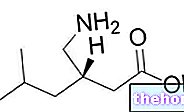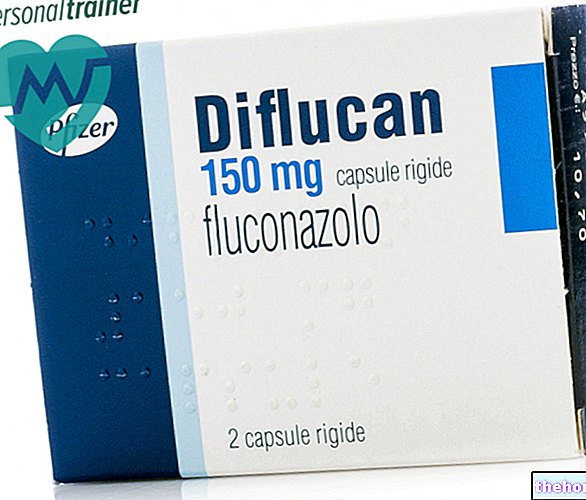
What is InductOs?
InductOs is an implant kit consisting of a powder for solution containing the active ingredient dibotermin alfa, a solvent and a matrix (collagen sponge).
What is InductOs used for?
InductOs is used to help bone grow. It can be used in the following cases:
- lumbar spinal fusion surgeries. It is a type of surgery that is performed to relieve back pain caused by a damaged spinal disc: the disc that separates two vertebrae (the bones of the spine) is removed and the vertebrae are fused together (joined). InductOs is used in conjunction with a special metal cage that serves to correct the position of the spine. In this type of surgery, InductOs can be used as a replacement for autogenous bone transplantation (a transplant in which the bone to be transplanted is taken from another part of the patient's body or from a donor) in adult patients who have undergone at least 6 months to treatment for a disc injury without undergoing surgery;
- treatment of tibial fractures. InductOs is used as a complementary therapy to standard treatment and fracture care. The medicine is used only when the nail to fix the bone does not require reaming (drilling to place the nail).
The medicine can only be obtained with a prescription.
How is InductOs used?
InductOs must be used by a surgeon who specializes in the field. InductOs must be reconstituted in solution before use, then distributed over the matrix. It is then necessary to wait at least 15 minutes (but not more than two hours). The matrix can then be cut to the required size before use. The contents of a kit are usually sufficient. In lumbar spinal fusion surgery, the damaged vertebral disc is removed and replaced with two metal cages containing InductOs. The metal cages fix the position of the vertebrae and InductOs stimulates the growth of bone between the two vertebrae to permanently join them in position. correct. For a tibial fracture, InductOs is applied around the fractured bone to aid in healing.
How does InductOs work?
The active ingredient in InductOs, dibotermin alfa, acts on the bone structure. It is a copy of a protein called bone morphogenic protein-2 (BMP-2), which is produced naturally by the body and which promotes the formation of new bone tissue. When applied, dibotermin alfa stimulates the surrounding bone tissue. the matrix to produce new tissue. The new bone develops from the matrix, which then gradually disappears. Dibotermin alfa is produced by a method known as "recombinant DNA technology": that is, it is made from cells that have received a gene (DNA) which enables them to produce this substance. Dibotermin alfa acts just like the naturally produced BMP-2 proteins in the body.
How has InductOs been studied?
InductOs was studied in 279 patients undergoing lumbar spinal fusion surgery. Spinal fusion performed with InductOs was compared with a fusion made with a bone graft with tissue taken from the hip during surgery. The main parameter of effectiveness was the confirmation of the vertebrae fusion by radiological examination and the improvement of the pain and disability reported by the patient, two years after the operation.
InductOs has been studied in 450 patients with tibial fractures. InductOs was compared with standard care and the main measure of effectiveness was the number of patients who did not need further treatment for the tibial fracture (such as bone transplantation or replacement of intramedullary nails used to join the bones). in the year following the intervention.
What benefit has InductOs shown during the studies?
In spinal fusion, InductOs has demonstrated the same efficacy as bone transplantation. Two years after surgery, 57% of patients (69 out of 122) treated with InductOs had responded to treatment, compared with 59% (78 out of 133) patients undergoing bone transplantation.
In patients with tibial fractures, use of InductOs in addition to standard care was more effective than standard care alone in reducing the risk of therapy failure. 46% of patients receiving standard care needed a further surgery within a year to heal the fracture, compared with 26% of patients who also received InductOs.
What is the risk associated with InductOs?
In spinal fusion surgery, the most common side effects with InductOs (seen in more than 1 in 10 patients) are accidental injuries, neuralgia (pain in the nerve endings), lower back pain and bone disorders (for example, delayed healing), which however, they are also frequently seen in patients receiving standard care. In tibial fracture surgery, the most common side effects with InductOs (seen in more than 1 in 10 patients) are pain and infections. Infections are more common with InductOs than with standard treatment when the patient's bones are fixed using reamed intramedullary nails. For the full list of side effects reported with InductOs, see the package leaflet.
InductOs should not be used in people who may be hypersensitive (allergic) to dibotermin alfa or any of the other ingredients. InductOs should also not be administered to:
- patients still growing;
- patients diagnosed with cancer or who are undergoing cancer therapy;
- patients with a focus of infection at the site of surgery;
- patients whose fractured area is not supplied with a sufficient amount of blood;
- patients with fractures related to other diseases, for example, fractures due to Paget's disease or tumors.
Why has InductOs been approved?
The Committee for Medicinal Products for Human Use (CHMP) decided that InductOs's benefits are greater than its risks for single level anterior lumbar spinal fusion (L4 - S1) as a replacement for autogenous bone graft and for the treatment of traumatic fractures. tibia in adult patients, in addition to usual treatment. The Committee therefore recommended the granting of a marketing authorization for the product.
More information about InductOs:
On 9 September 2002, the European Commission granted Wyeth Europa Ltd. a "Marketing Authorization" for InductOs, valid throughout the European Union. The "Marketing Authorization" was renewed on 9 September 2007.
For the full version of InductOs EPAR click here.
Last update of this summary: 06-2008.
The information on InductOs - dibotermina alfa published on this page may be out of date or incomplete. For a correct use of this information, see the Disclaimer and useful information page.




























